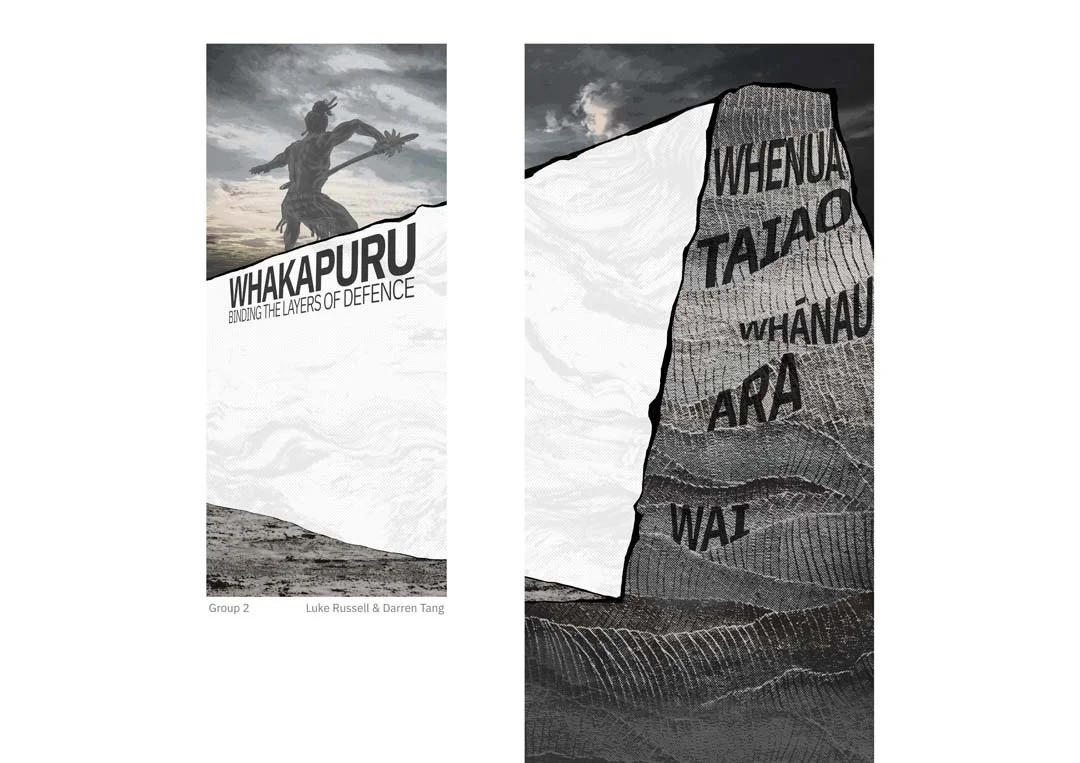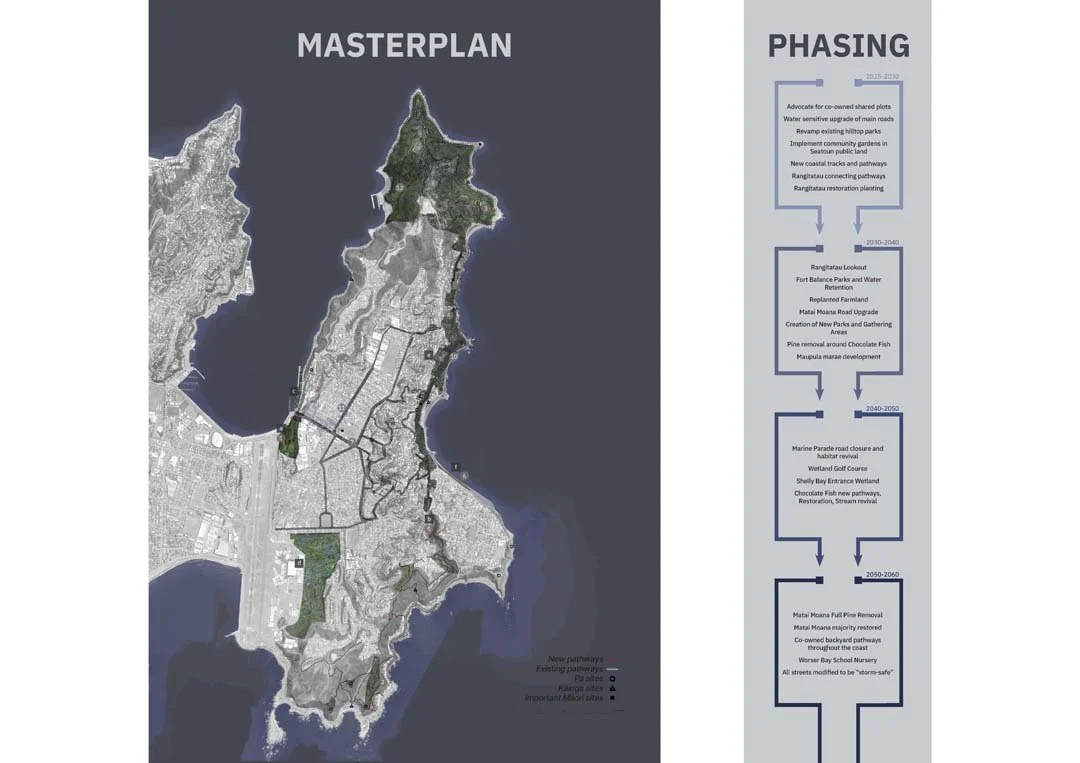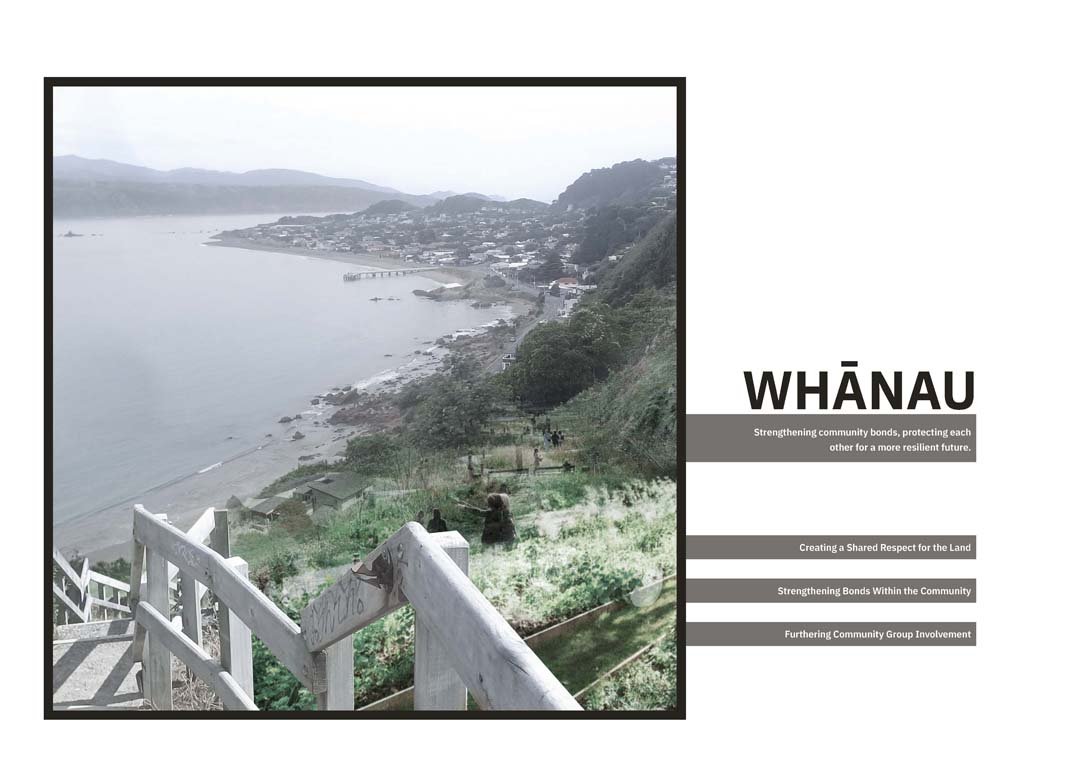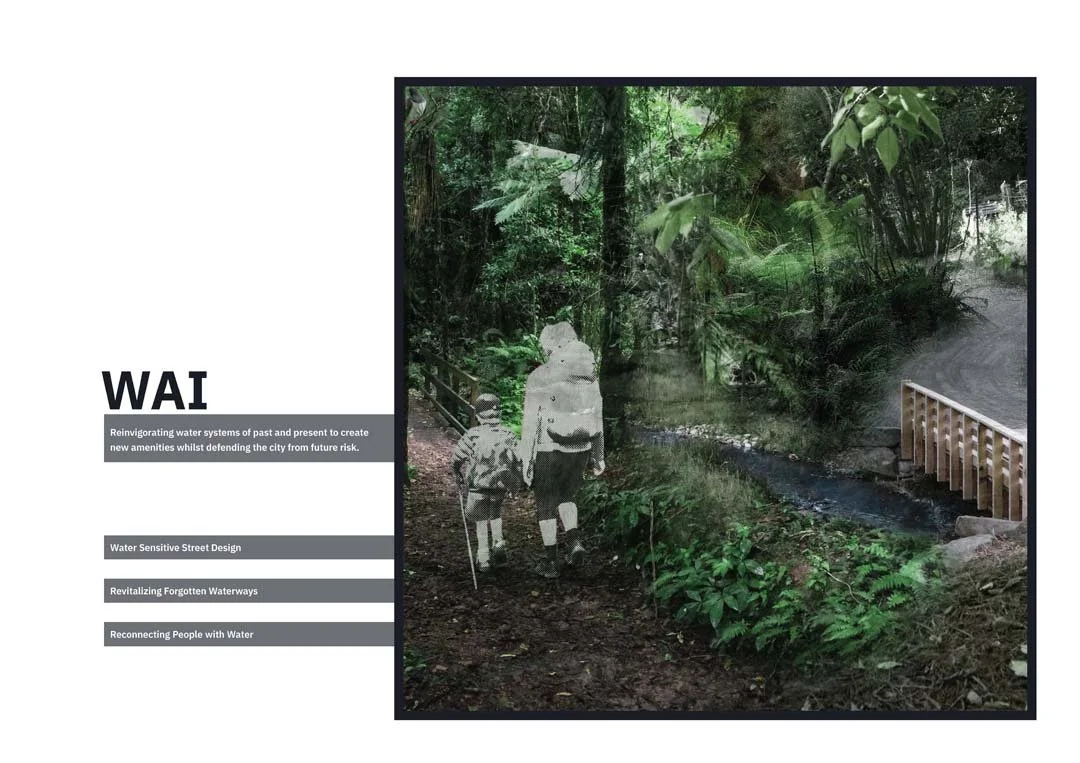
WHAKAPURU
Binding the Layers of Defence
Luke Russell & Darren Tang (Group 02)
Maioro (Trenches and Rampart) were the earthworks that defended the Pā. Māori would use the soil from digging the trenches to make the ramparts taller. But loose soil is unstable and easily falls apart. Māori layered native ferns, mānuka leaves, tumatakuru, or other plants to consolidate the soil. They called these layers Whakapuru, they are the materials that bind the earth together, strengthening the defences.
Te Motu Kairangi is facing imminent threat. Risks of sea-level rise, tsunami, storm surge, and flooding loom overhead, all while the peninsula deals with current identity, ecological, and political battles. In researching about Pā and Kāinga, we heavily believe that embracing aspects of Māori living are essential for the fight ahead.
Maioro represents our method of rebuilding Te-Motu-Kairangi’s defences, rebuilding current landforms and identities to prepare for the future. We focused on creating natural barriers on the coastline that enhance its amenity value as well as reinvigorating land on the hills as fallbacks when disaster strikes, much like the relationship between Pā and Kāinga.
Defences by themselves are not enough to create a unified Te-Motu-Kairangi. Whakapuru are the aspects that bind Te-Motu-Kairangi as a cohesive defence system. From our interest in Pā and Kāinga settlements, we found that what Māori settlements valued are very relevant to helping Te-Motu-Kairangi grow. Whenua (connection to land and place), whānau (family, community, friends), taiao (the natural world), ara (pathways, connections, access), and wai (water as a life force) are the values that we believe to be integral to linking the land together.








